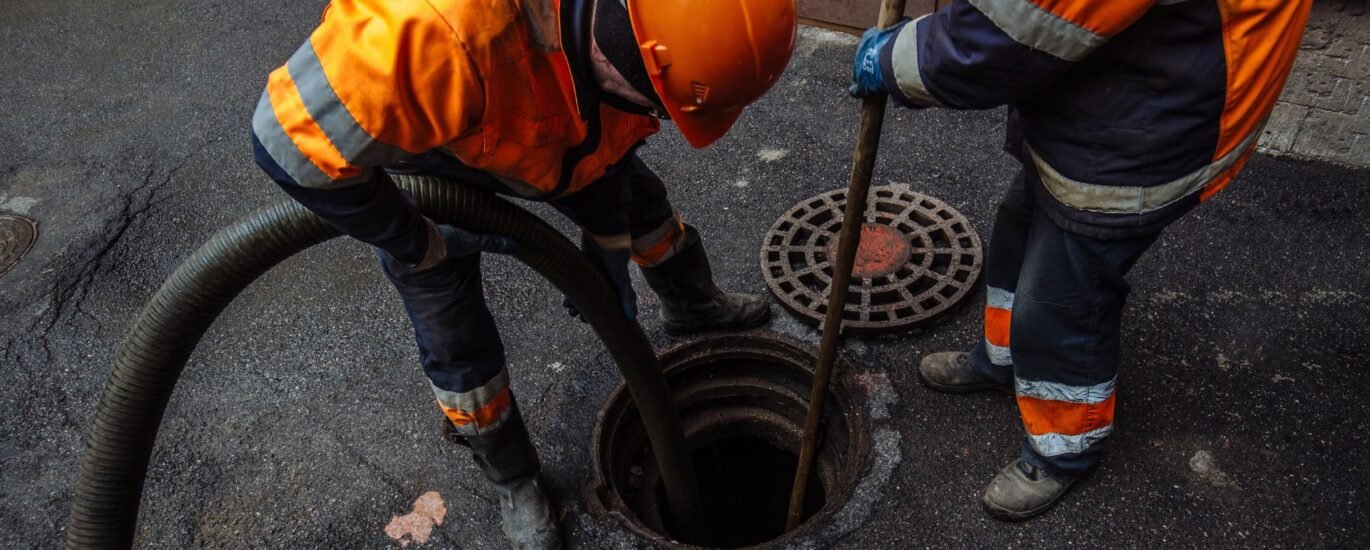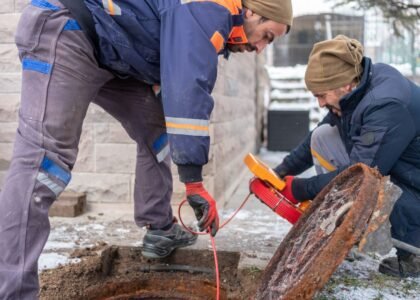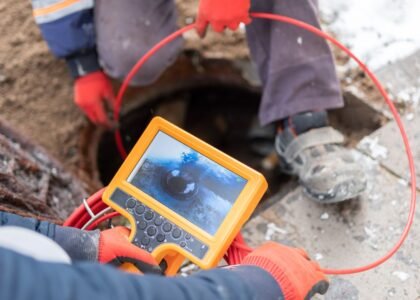Introduction
Your home’s sewer line is one of the unsung heroes of your plumbing system. When it works, you barely think of it. But once trouble starts, things go downhill fast. In this post, we’ll walk through how to detect signs of sewer line trouble early, what causes the damage, and what your options are when repair or replacement becomes essential. If you’ve already seen symptoms or want to schedule work, check out our **sewer line repair and replacement** service page**.
Why Early Detection Matters
- Minimize property damage. A small leak or crack can gradually erode soil, weaken foundations, or damage landscaping.
- Lower repair costs. Fixing a small section is far cheaper than full replacement after collapse.
- Less disruption. Early intervention often allows for less invasive methods (like trenchless repair).
- Health & hygiene. Sewer leaks invite foul odors, pests, and contamination risks.
By staying vigilant, you can head off bigger problems.
Common Causes of Sewer Line Trouble
Understanding why sewer lines fail helps homeowners prevent issues. Here are the typical culprits:
1. Tree Root Intrusion
Tree roots naturally seek moisture. Tiny cracks or gaps in your pipes become irresistible to roots, which grow into the system, block flow, and eventually crack or displace pipe sections.
2. Pipe Corrosion, Age & Material Decay
Older lines—especially clay, cast iron, or older concrete—are vulnerable to corrosion, chemical damage, and internal scaling over time. Soil composition, moisture, and water chemistry can speed deterioration.
3. Blockages from Foreign Objects
Flushing or draining non-biodegradable materials (wet wipes, grease, hygiene products, etc.) leads to buildup inside pipes, restricting flow and stressing joints.
4. Ground Movement & Soil Shifts
Soil settling, heavy loads aboveground (vehicles, construction), or ground contraction/expansion can shift, crack, or misalign buried sewer pipes.
5. Poor Original Installation
Incorrect slope, weak joints, or inadequate pipe size from the start can lead to recurring issues.
6. Temperature Fluctuations & Environmental Stress
While less common in warm regions, freeze–thaw cycles, drought cracks, or sudden temperature shifts can affect pipe integrity.
Telltale Signs of Sewer Line Problems
Catch these red flags early:
Slow Drains or Multiple Backups
If more than one drain runs slowly—or toilets back up when other fixtures are in use—it often signals a main line block, not just a localized clog.
Persistent, Foul Odors
Smells of sewage from drains, yard, or low areas of the home suggest a leak or pipe break allowing gases to escape.
Gurgling Sounds
Gurgling toilets or drains—especially when water’s being used elsewhere—signal trapped air in a blocked or damaged line.
Lush Patches in the Yard / Wet Spots
Pipes leaking underground fertilize soil. If you see unusually green grass patches or soggy areas in dry conditions, suspect a leak.
Sinkholes, Depressions, or Indentations
A severe break can wash away soil, leaving depressions. That’s an urgent warning.
Pest Infestations
Rats, insects, or bugs entering via cracked pipes or accessing sewer leaks can show up in basements or bathrooms.
From Signs to Solutions: What Happens Next
If you suspect sewer line trouble, here’s what a professional process typically looks like:
Step 1: Inspection & Diagnosis
A high-resolution sewer camera is sent down your line. The live video helps locate damage, blockages, cracks, or tree root intrusion. This avoids needless digging.
Step 2: Plan the Repair or Replacement
Based on the inspection, experts recommend the best method—sometimes repairing a localized section, or in more serious cases, replacing part or all of the line.
Step 3: Repair Methods
- Traditional (Open Excavation): Dig trench, remove damaged pipe, replace section, backfill.
- Trenchless (Less Disruptive):
• Pipe bursting: Shatters the old pipe while pulling a new one in.
• CIPP (Cured-In-Place Pipe) Lining: Insert a resin-coated liner, inflate, and cure it into a new seamless pipe inside the old one.
Step 4: Testing & Site Restoration
After repair, another camera inspection ensures no leaks. Then the trench is backfilled, and landscaping or pavement is restored.
When Replacement Is the Better Option
Sometimes repair just isn’t enough. Full replacement might be more practical when:
- Damage is extensive or widespread, such as multiple breaks or collapsed segments.
- Pipes are very old and past their usable lifespan.
- You’re paying for repeated repairs—repair costs compounding may exceed replacement.
- Your home is being renovated or expanded, requiring upgraded capacity.
If replacement is chosen, trenchless methods (when feasible) minimize disruption.
Best Practices to Prolong Sewer Line Life
Adopting sound habits can significantly extend your plumbing’s lifespan:
- Proper disposal only: Flush only waste and toilet paper. Don’t pour grease, oil, or food down drains. Use screens for hair or soap scum.
- Mind your landscaping: Plant trees and shrubs with noninvasive roots—and keep them well away from sewer lines.
- Periodic inspections: Schedule sewer camera inspections every few years, especially if your pipes are older or you’ve had issues before.
- Address minor issues promptly: Slow draining or minor gurgles may seem benign but can escalate to major damage.
Summary & Next Steps
Detecting sewer line damage early is smart home maintenance. Knowing the causes and warning signs can save you from costly and disruptive repairs later. When issues arise, a professional team will inspect, diagnose, and recommend repair or replacement options—trenchless methods often being less invasive. And once the work is done, restoration and testing complete the service.
If you’re in Lakeland or the surrounding area and suspect you need work, visit our sewer line repair and replacement service page or contact us directly to schedule an expert inspection.



